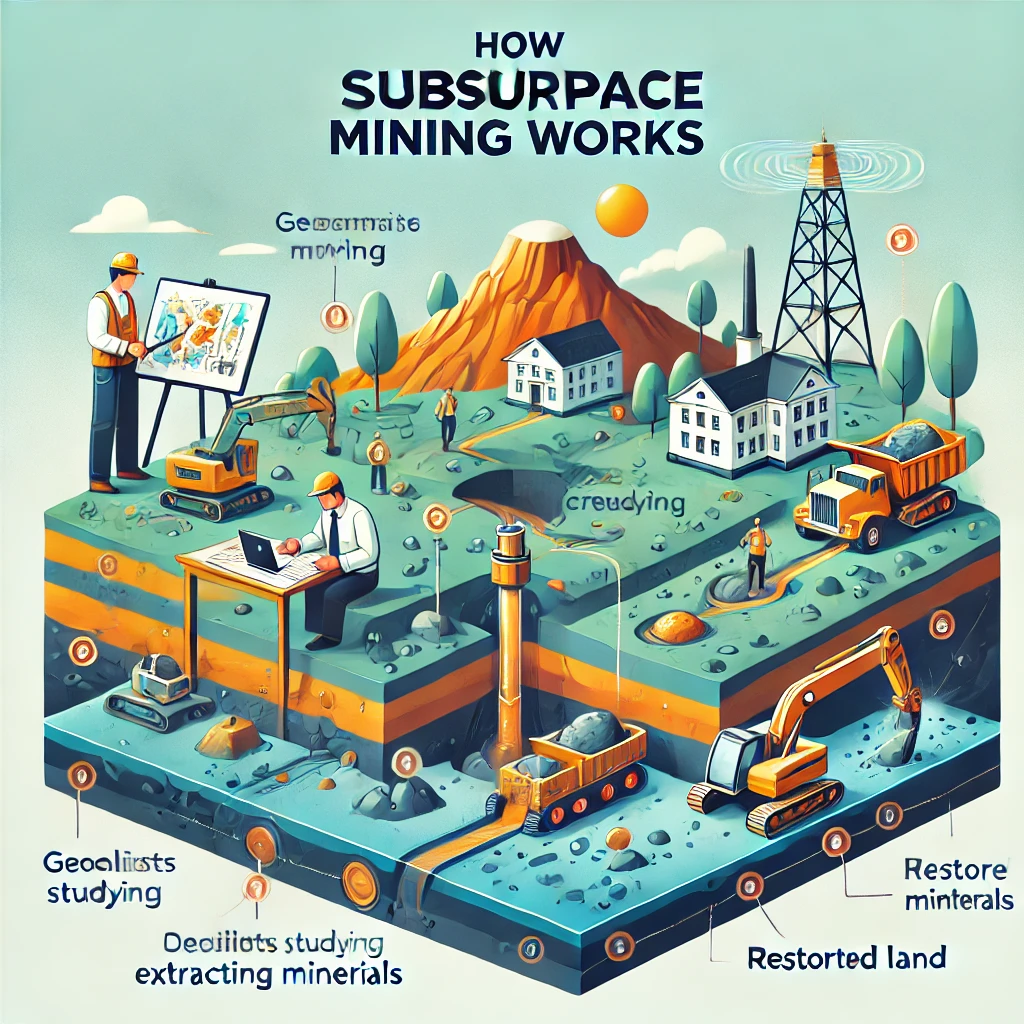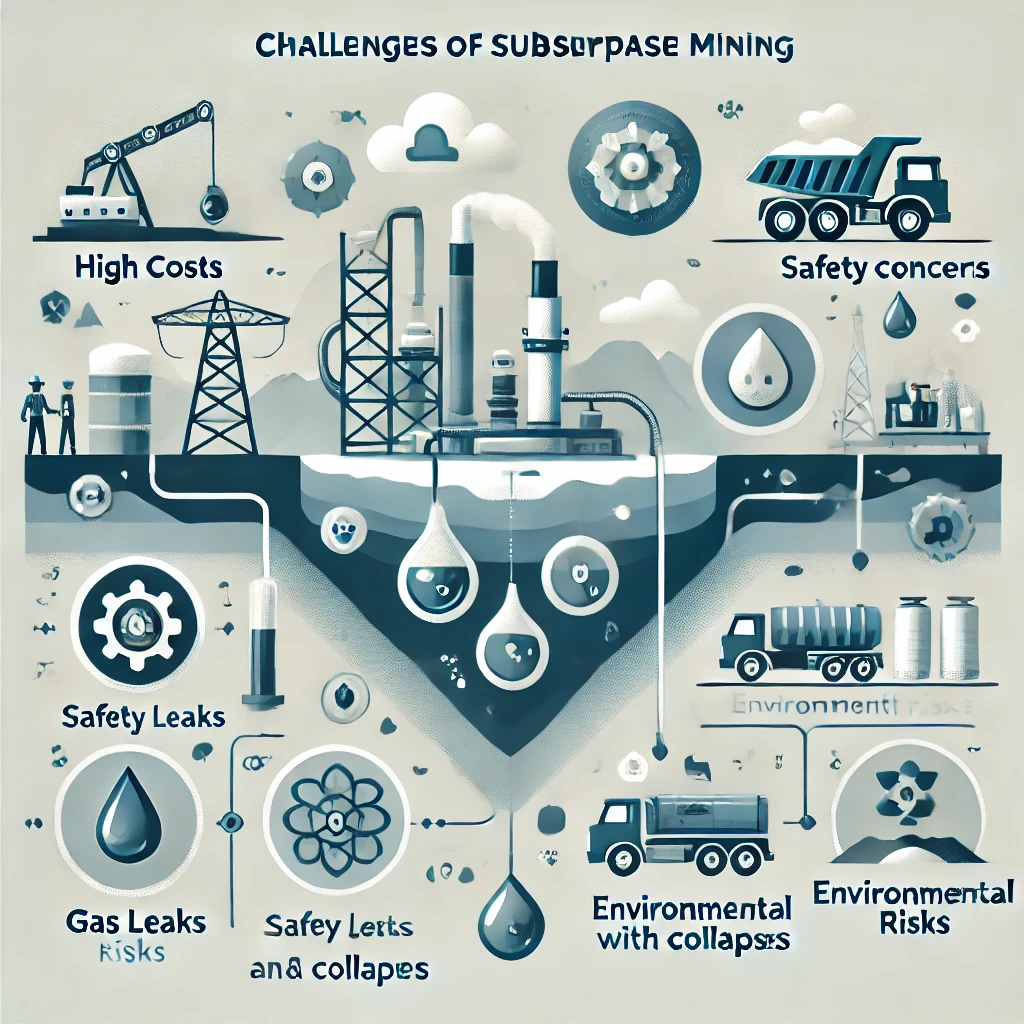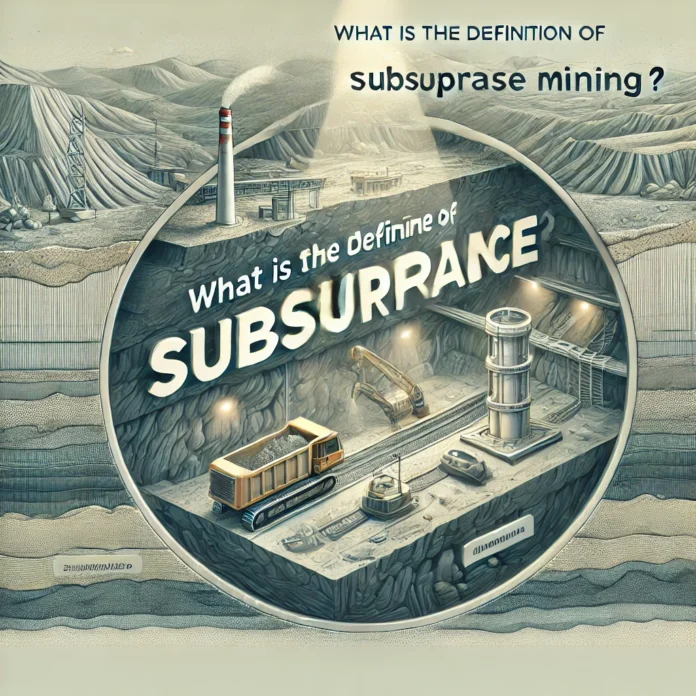Subsurface mining is the process of extracting valuable resources and minerals from below the ground that are not accessible through surface mining. This technique is useful for deposits that are too deep in the geology to be removed by surface diggings only.
Let us understand the concept of “What is the Definition of Subsurface Mining?” in detail and discover its significance.
Importance of Subsurface Mining
Subsurface mining is very vital because many valuable resources, such as metals and fossil fuels, are deeply surrounded under the ground. This technique is a better way to extract minerals that are essential for our industry and daily life.
Environmental Benefits
- One advantage is that the environmental impact of subsurface mining is less than that of surface mining.
- Also, surface disturbance is quite limited, which is very good for the natural environment and also protects it.
Access to Rare Resources
Resources that are present at greater depths can only be extracted properly using subsurface methods.
How Does Subsurface Mining Work?
Subsurface mining is a systematic and technical process that takes place in several steps:

Surveying and Planning: Geologists study the area so that mineral deposits can be discovered and recognized.
Drilling: To make access to the resources possible, shafts and tunnels are drilled.
Extraction: In order to make minerals and ores usable, they are extracted by machinery and then transferred for additional processing.
Closure: To minimize environmental harm following mining, the land is guarded and restored. Additionally, this is required to protect the ecosystem.
Advantages of Subsurface Mining
Well, now let us talk about some of its main advantages.
Deep Mineral Access: This method is most suitable for extracting deeply hidden deposits.
Higher Yield: Because in this method we do targeted extraction, later the output is more and more effective.
Minimal Surface Impact: The surface disturbance of this process is much less as compared to surface mining. Which is a good thing for the natural environment.
Challenges of Subsurface Mining
Now let us talk about some challenges here.

Cost: Because it requires specialized workers and sophisticated equipment, this procedure is highly costly.
Safety Concerns: There is a chance of gas leaks, collapses, and inadequate ventilation during this process. They can be quite harmful.
Environmental Risks: While the surface impact is low in this process, there is also a risk of groundwater pollution from subsurface mining.
Subsurface Mining vs. Surface Mining
| Aspect | Subsurface Mining | Surface Mining |
|---|---|---|
| Definition | Extracting minerals from deep underground. | Removing surface layers to access minerals near the Earth’s top. |
| Process | It involves blasting, stripping, and excavating the surface. | Involves blasting, stripping, and excavating the surface. |
| Depth of Resources | Suitable for resources buried deep below the surface. | Higher surface destruction causes habitat loss and soil erosion. |
| Environmental Impact | Lesser surface disturbance; possible groundwater pollution. | Higher surface destruction; causes habitat loss and soil erosion. |
| Cost | Expensive due to specialized equipment and labor. | Relatively cost-effective as it requires simpler machinery. |
| Safety Concerns | Risks of gas leaks, cave-ins, and ventilation issues. | Safer but involves risks like landslides and blasting hazards. |
| Yield Efficiency | More targeted extraction with higher yields. | Extracts large quantities but may include more waste material. |
| Examples of Resources | Coal, metals, and gems found deep underground. | Sand, gravel, and shallow ore deposits like bauxite. |
Conclusion
Subsurface mining is a new and better process that provides many important resources for modern industries and daily life. Its techniques are a little difficult and expensive, but they are necessary for long-term benefits and environmental safety. In this process, with proper planning and advanced safety methods, we can make it smooth, more efficient, and much more secure.
FAQs
One method for obtaining precious minerals and resources from deep within the Earth is subsurface mining. It is vital for obtaining resources like metals and fossil fuels.
Subsurface mining is lower than surface mining.
1: Planning and surveying to identify mineral deposits.
2: Drilling to gain access to resources.
3: Employing machinery to gather minerals.
1: Accessing deeply buried mineral reserves.
2: Finding more yields through focused extraction.
3: Having less surface impact.
1: The high expenses of expert labor and equipment.
2: Safety issues, including the risk of gas leaks.
3: Environmental risks like groundwater impurity.
Also Read: Does Alan Cumming Own the Castle in The Traitors?


